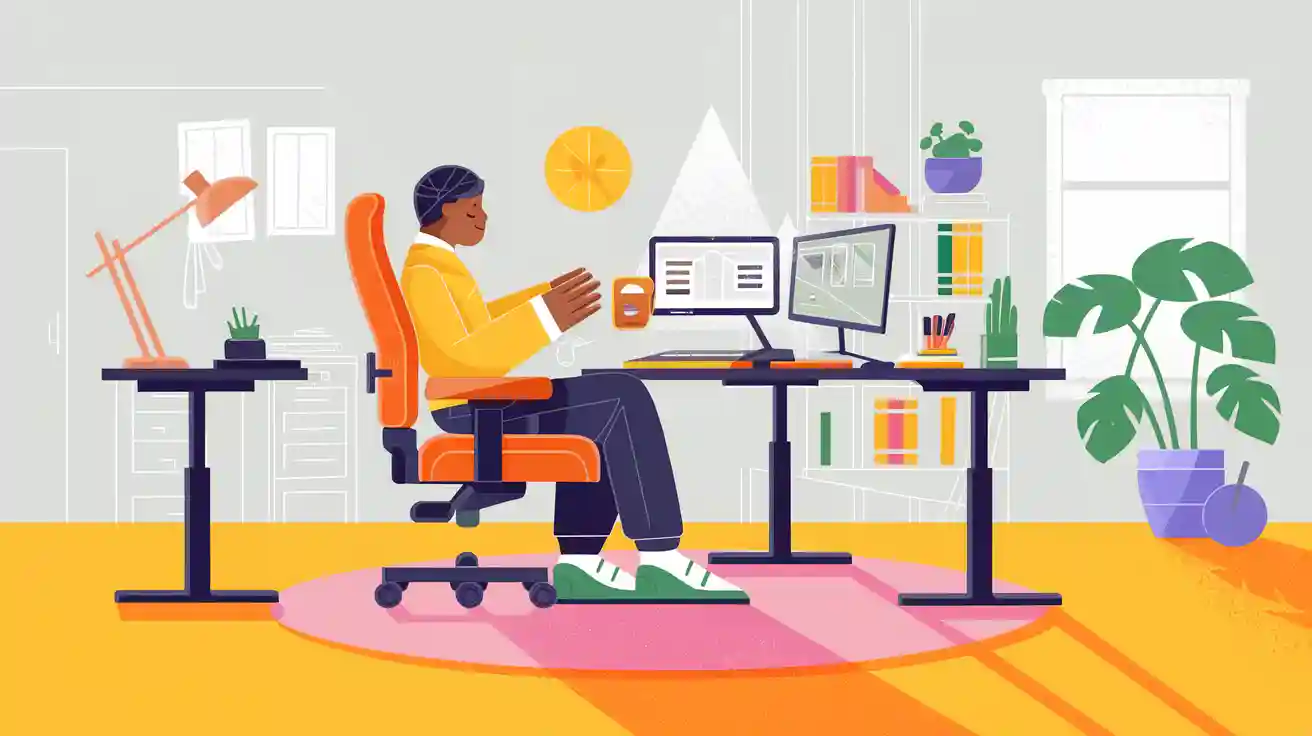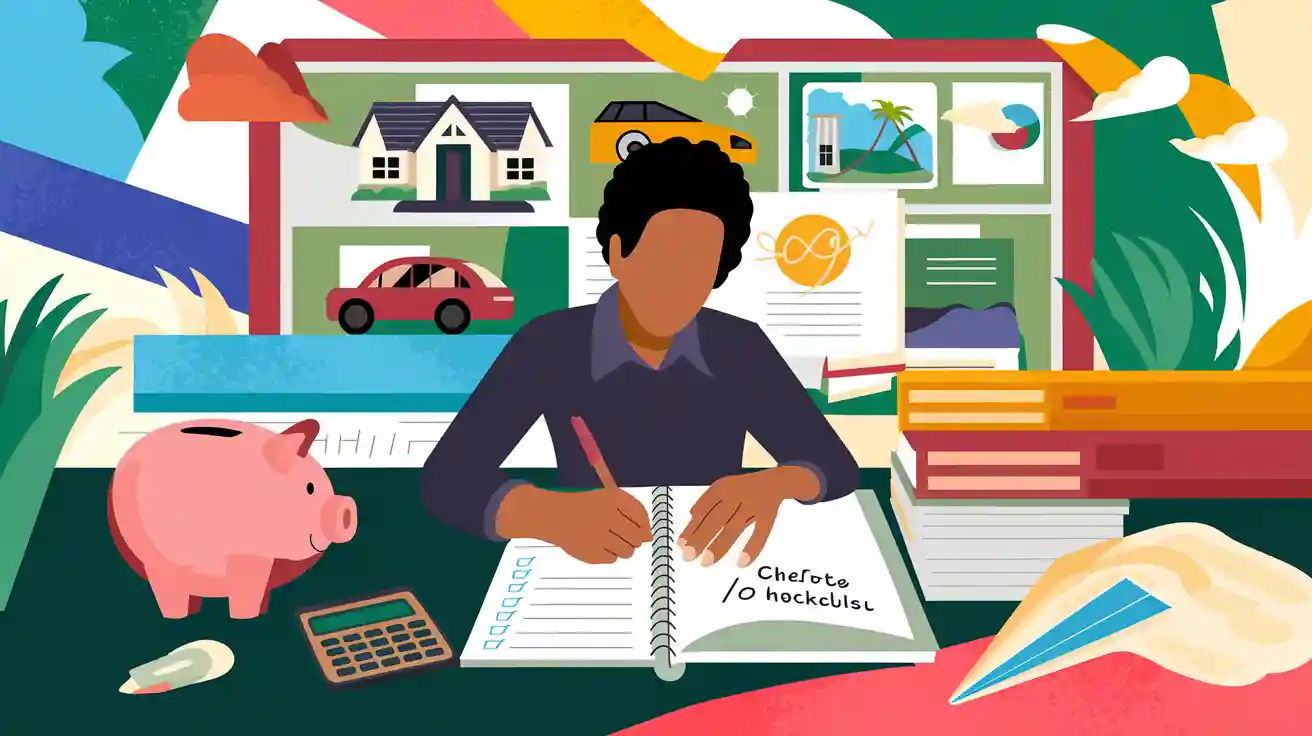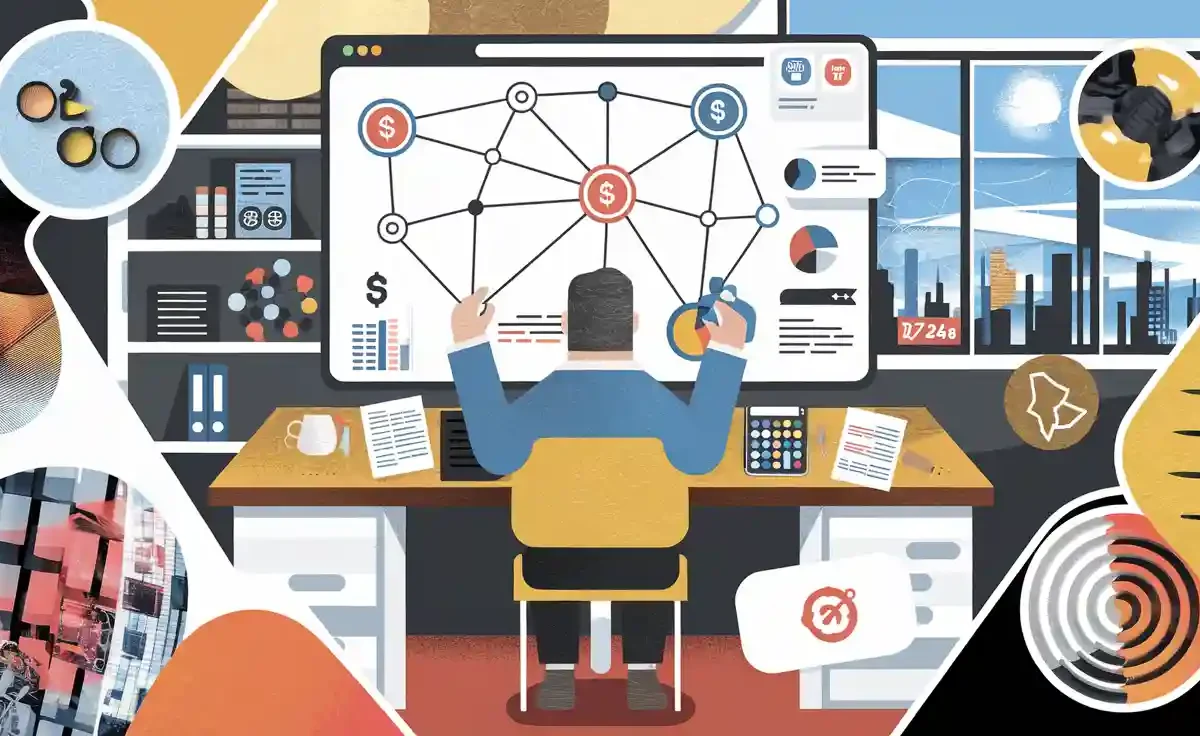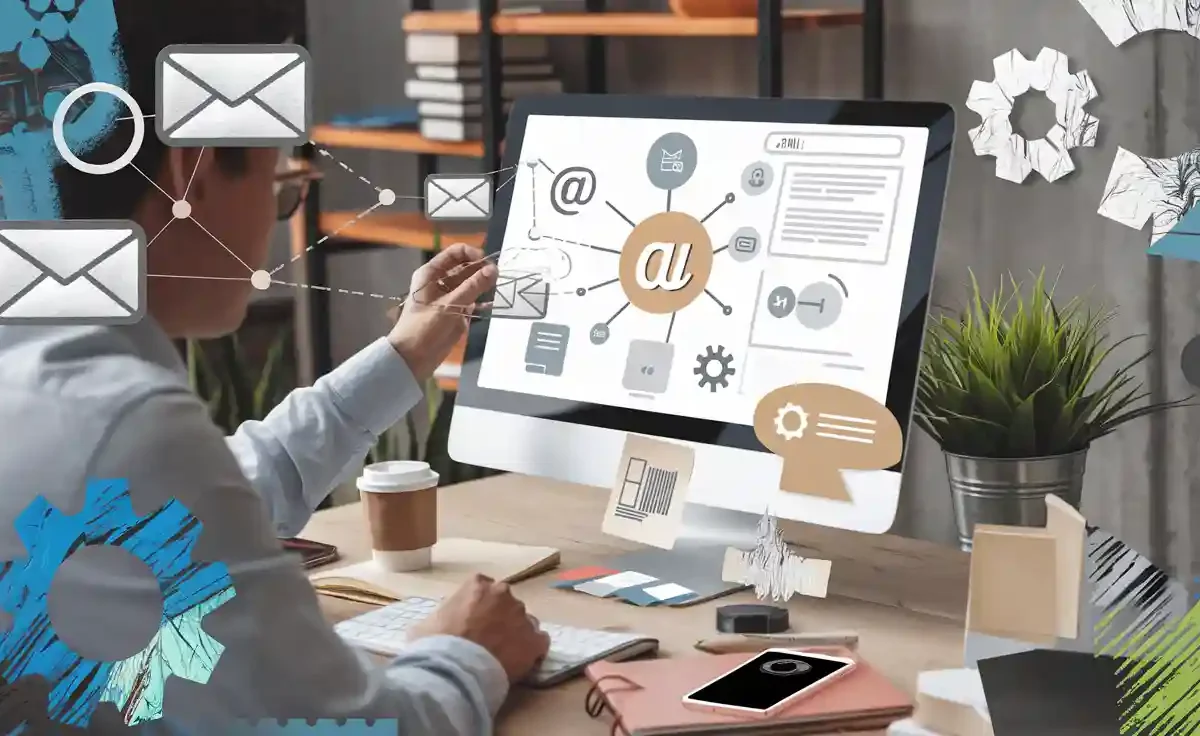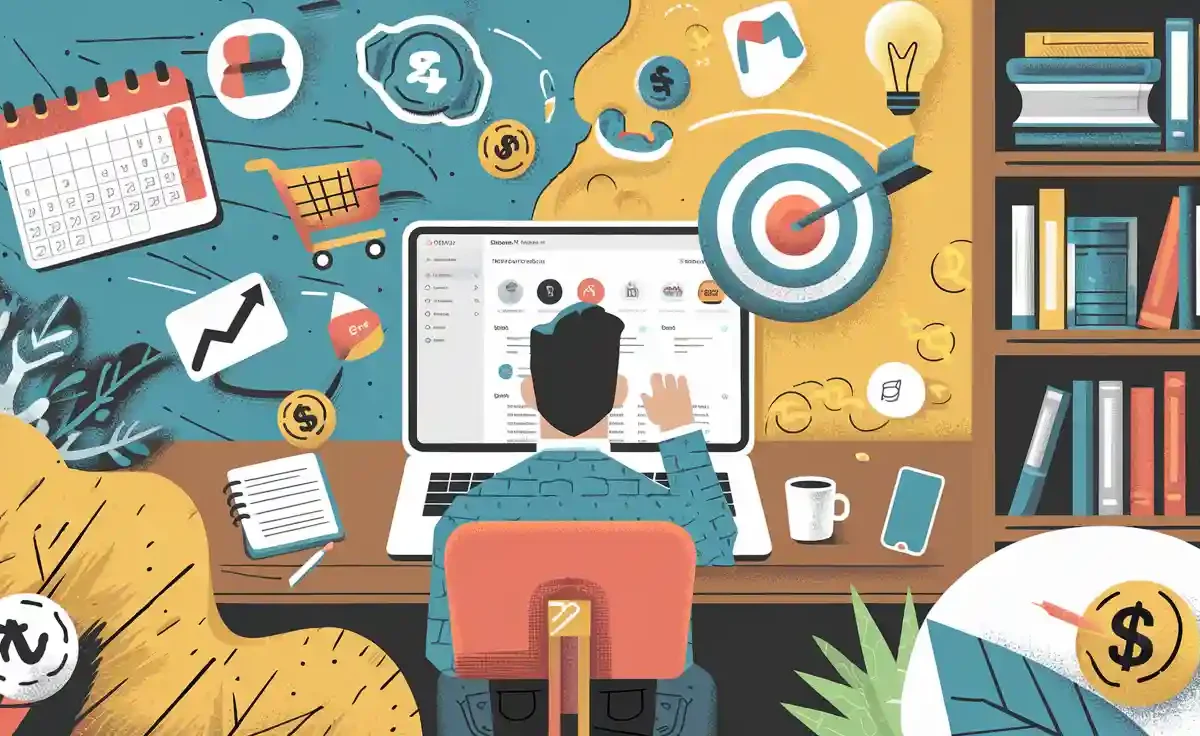
Working from home can feel like a double-edged sword. On one hand, you gain flexibility and save time by skipping the commute. On the other, distractions like family, pets, or social media can derail your focus. Studies show it takes 23 minutes to refocus after interruptions, making it crucial to stay focused and productive. Ready for tips?
Key Takeaways
Make a special spot just for work. A quiet place helps you focus and keeps work apart from home life.
Tell your family and pets about your work time. Let them know your schedule and use signs to show when you’re busy.
Plan your day with time blocks. Give each task its own time to avoid feeling tired from too many choices and get more done.
Create a Productive Workspace for Remote Work
Choose a Dedicated and Distraction-Free Work Area
Your workspace plays a huge role in how productive you are while working from home. Start by choosing a spot in your home that’s quiet and free from distractions. Avoid working in areas like the living room or kitchen, where family members or pets might interrupt you. Instead, pick a corner or room where you can focus without interruptions.
A study from the University of California Irvine found that it takes about 23 minutes to regain focus after a distraction. This shows how important it is to minimize interruptions in your work environment.
Having a dedicated workspace also helps you mentally separate work from personal life. This can improve your work-life balance and make it easier to stick to a routine.
Optimize Ergonomics for Comfort and Focus
Comfort is key when you’re spending hours at your desk. Invest in ergonomic furniture, like an adjustable chair with lumbar support, to prevent back and neck strain. If possible, use a sit/stand desk to switch positions throughout the day. This not only reduces health risks but also keeps you more alert.
Adjustable chairs help you maintain good posture.
Sit/stand desks improve flexibility and reduce fatigue.
Proper lighting prevents eye strain and headaches.
Don’t forget about air quality and noise levels. A well-ventilated room keeps you energized, while noise-canceling headphones can block out distractions.
Keep Your Workspace Organized and Clutter-Free
A cluttered desk can lead to a cluttered mind. Keep your workspace tidy by organizing your supplies and removing unnecessary items. Adopting a minimalist approach can boost your focus and efficiency.
Evidence Type | Description |
|---|---|
Minimalism Benefits | Studies show that adopting minimalism in workspace design enhances productivity for remote workers. |
Focus and Efficiency | Research indicates a direct link between decluttered environments and higher levels of focus and efficiency. |
Satisfaction and Well-being | A study found that individuals in organized spaces report greater satisfaction and improved overall well-being. |
When you create a home office that’s clean and organized, you’ll feel more motivated to tackle your tasks. Plus, it’s easier to find what you need when everything has its place.
Manage Distractions to Stay Focused
Set Boundaries with Family and Pets
When you’re working from home, family members and pets can unintentionally pull your attention away from work. Setting clear boundaries is essential to manage distractions and give your full attention to tasks. Let your family know your work hours and ask them to avoid interrupting you during that time. You can even use visual cues, like a closed door or a “Do Not Disturb” sign, to signal when you’re busy.
Research shows that setting boundaries reduces conflicts between work and family life, including interactions with pets. This not only improves your focus but also enhances your mental well-being. If you have pets, consider scheduling playtime or walks before work to keep them content while you focus on your tasks.
Use Tools to Block Digital Distractions
Digital distractions are one of the biggest challenges when you’re trying to stay focused. Luckily, the right tools for remote work can help you manage distractions effectively. Apps like Freedom or Cold Turkey can block access to social media and other non-work-related websites during your work hours. Browser extensions like StayFocusd can limit the time you spend on distracting sites.
These tools ensure you give your full attention to your work without the temptation of scrolling through social media or checking unnecessary emails. By using these remote work strategies, you can create a digital environment that supports productivity.
Turn Off Notifications and Limit Social Media Use
Notifications can be a constant source of interruptions. Turning them off is a simple yet powerful way to manage distractions. Disable non-essential notifications on your phone and computer to minimize disruptions. Studies reveal that it takes about 23 minutes to regain focus after each distraction, so reducing interruptions can significantly boost your productivity.
Limiting social media use also helps you stay focused. Spending less time on social platforms not only enhances your concentration but also improves your mood. A positive mindset makes it easier to give your full attention to your work.
Statistic | Finding |
|---|---|
Felt they were getting more done per hour during the pandemic compared to before | |
90% | Thought they were doing just as well, or better, while working remotely |
23 minutes | Time taken to regain focus from each distraction |
By managing interruptions and using these strategies, you can create a distraction-free work environment that keeps you productive and focused throughout the day.
Structure Your Day for Maximum Productivity
Create a Consistent Daily Schedule
A consistent work-from-home schedule can do wonders for your personal productivity. Start by setting fixed work hours that align with your previous office routine. This helps you maintain structure and keeps your day predictable. When you stick to a schedule, it’s easier to focus and avoid procrastination.
Designating specific times for tasks also allows you to align your work with your natural energy levels. Studies show that most people reach peak focus in the late morning to early afternoon. By scheduling your most demanding tasks during these hours, you can boost your output by up to 20%.
Tip: Use a calendar app to block off your work hours and share it with your family. This helps set boundaries and ensures everyone respects your schedule.
Use Time-Blocking to Prioritize Tasks
Time-blocking is a game-changer for structuring your day. Instead of juggling multiple to-do lists, assign specific time slots for each task. This method reduces decision fatigue and keeps you focused on what matters most.
For example, dedicate the first hour of your day to emails, then block two hours for deep work. A Harvard Business Review study found that professionals using time-blocking increased their productivity by 50%. Plus, it aligns with the principle of working in focused intervals, which top performers swear by.
Pro Tip: Combine time-blocking with the Pomodoro Technique. Work for 25 minutes, then take a 5-minute break. Research shows this approach can boost productivity by up to 40%.
Identify and Work During Your Peak Productivity Hours
Everyone has certain times of the day when they feel most alert and focused. Identifying these peak productivity hours can transform how you structure your day. For many, late mornings and early afternoons are ideal for tackling complex tasks.
A study revealed that workers who aligned their schedules with their natural energy peaks saw a 20% increase in output. To make the most of this, plan your high-priority tasks during these hours. Save less demanding activities, like responding to emails, for when your energy dips.
Note: If you’re unsure of your peak hours, track your energy levels throughout the day for a week. Patterns will emerge, helping you optimize your routine.
By creating a consistent schedule, using time-blocking, and working during your peak hours, you can structure your day for maximum productivity. These strategies not only help you stay focused but also make working from home more manageable and rewarding.
Take Breaks to Recharge and Maintain Focus

Schedule Short Breaks to Avoid Burnout
When you’re working from home, it’s easy to lose track of time and push through long hours without stopping. But taking short, scheduled breaks is one of the best tips to avoid burnout and stay laser-focused. Even a quick 2-3 minute pause can refresh your mind and reduce eye strain. Regular breaks also help you maintain your energy throughout the day.
Studies show that professionals working remotely often log an extra 15 hours per week. This can lead to emotional exhaustion if you don’t take time to recharge. By stepping away from your desk for a few minutes every hour, you can increase concentration and prevent fatigue. Use a timer or app to remind yourself to take these breaks.
Engage in Activities That Refresh Your Mind
Breaks aren’t just about stepping away from work—they’re an opportunity to reset your focus. Engage in activities that help you recharge mentally. Stretching, taking a short walk, or even practicing deep breathing can work wonders. These simple actions improve blood flow and clear your mind, making it easier to stay focused when you return to work.
Research published in the Journal of Applied Psychology highlights that structured breaks can boost creativity and attention. Another study from the Harvard Business Review found that frequent, short breaks can improve focus by up to 40%. So, whether it’s sipping tea on your balcony or playing with your pet, choose activities that refresh your mind and reduce distractions.
Practice the Pomodoro Technique for Better Focus
The Pomodoro Technique is a proven way to stay focused and productive. It involves working in 25-minute intervals followed by a 5-minute break. This method helps you stay laser-focused during work sessions while giving your brain regular opportunities to recharge.
Studies confirm its effectiveness. Research from the European Journal of Psychology shows a 59% improvement in focus duration when using structured intervals like Pomodoro. Another study found a 25% increase in task completion rates among users of this technique. To get started, use a timer or a Pomodoro app to guide your sessions. You’ll find it easier to manage distractions and increase focus throughout your day.
By scheduling breaks, engaging in refreshing activities, and trying the Pomodoro Technique, you can maintain your productivity and stay focused while working from home.
Maintain Work-Life Balance While Working at Home
Set Clear Start and End Times for Your Workday
When you’re working at home, it’s easy to let your workday bleed into your personal time. Setting clear start and end times helps you create boundaries and maintain a healthy work-life balance. Decide on a schedule that works for you and stick to it. For example, if you start at 9 a.m., make it a habit to log off by 5 p.m.
This approach not only keeps your day structured but also improves your overall well-being. Studies show that allowing employees to set their own start and end times leads to better health and job satisfaction. It also lets you work during your most productive hours while managing personal needs.
Setting boundaries reduces stress.
A defined schedule helps you focus better.
You’ll have more time for hobbies and family.
Create Rituals to Transition Between Work and Personal Time
Switching gears from work mode to personal time can be tricky when you’re working at home. Creating small rituals can make this transition smoother. For instance, you could take a short walk, change into casual clothes, or listen to your favorite playlist after finishing work.
Teams that adopt consistent rituals report higher engagement and job satisfaction. These rituals help you mentally separate work from home life, making it easier to relax and recharge. Even something as simple as shutting down your computer at the same time every day can signal the end of your workday.
Tip: Find a ritual that feels meaningful to you. It could be as simple as brewing a cup of tea or journaling for five minutes.
Disconnect from Work Devices After Hours
Constantly checking emails or work messages after hours can blur the line between your professional and personal life. Disconnecting from work devices is essential for reducing stress and preventing burnout. Turn off notifications and avoid opening work-related apps once your workday ends.
Research highlights that staying “always on” can harm your relationships, sleep quality, and overall life satisfaction. By disconnecting, you’ll have more time for family, hobbies, and self-care. Plus, well-rested employees are more productive and focused during work hours.
Benefit | Description |
|---|---|
Reduced Stress and Burnout | Establishing boundaries between work and personal life helps lower stress and prevent burnout. |
Improved Work-Life Balance | Disconnecting enables time for family, hobbies, and personal interests, enhancing life satisfaction. |
Increased Productivity | Well-rested employees are more focused and efficient, leading to higher productivity levels. |
Taking control of your time and setting these boundaries will help you enjoy the benefits of working at home without sacrificing your personal life.
Staying focused while working from home doesn’t have to be a struggle. By creating a productive workspace, managing distractions, structuring your day, and taking regular breaks, you can boost your productivity and enjoy a better work-life balance. These tips aren’t just quick fixes—they’re proven strategies that lead to long-term success.
For example, companies like InnoVate and BrandBoost saw significant improvements in productivity and employee satisfaction by adopting techniques like time-blocking and the Pomodoro Technique. Research also shows that focused work periods with breaks enhance cognitive performance and reduce anxiety.
Start small, stay consistent, and watch how these changes transform your remote work experience. Mastering focus isn’t just about getting more done—it’s about creating a sustainable and fulfilling way to work. You’ve got this! 🚀
FAQ
How can I stay motivated while working from home?
Set small, achievable goals for each day. Celebrate your progress, even the small wins. A positive mindset keeps you motivated and productive.
What should I do if I feel isolated while working from home?
Stay connected with colleagues through virtual meetings or chats. Schedule regular check-ins to maintain a sense of community and combat loneliness.
How do I handle unexpected interruptions during work hours?
Communicate your work schedule to others in your home. Use noise-canceling headphones or a “Do Not Disturb” sign to minimize interruptions.
